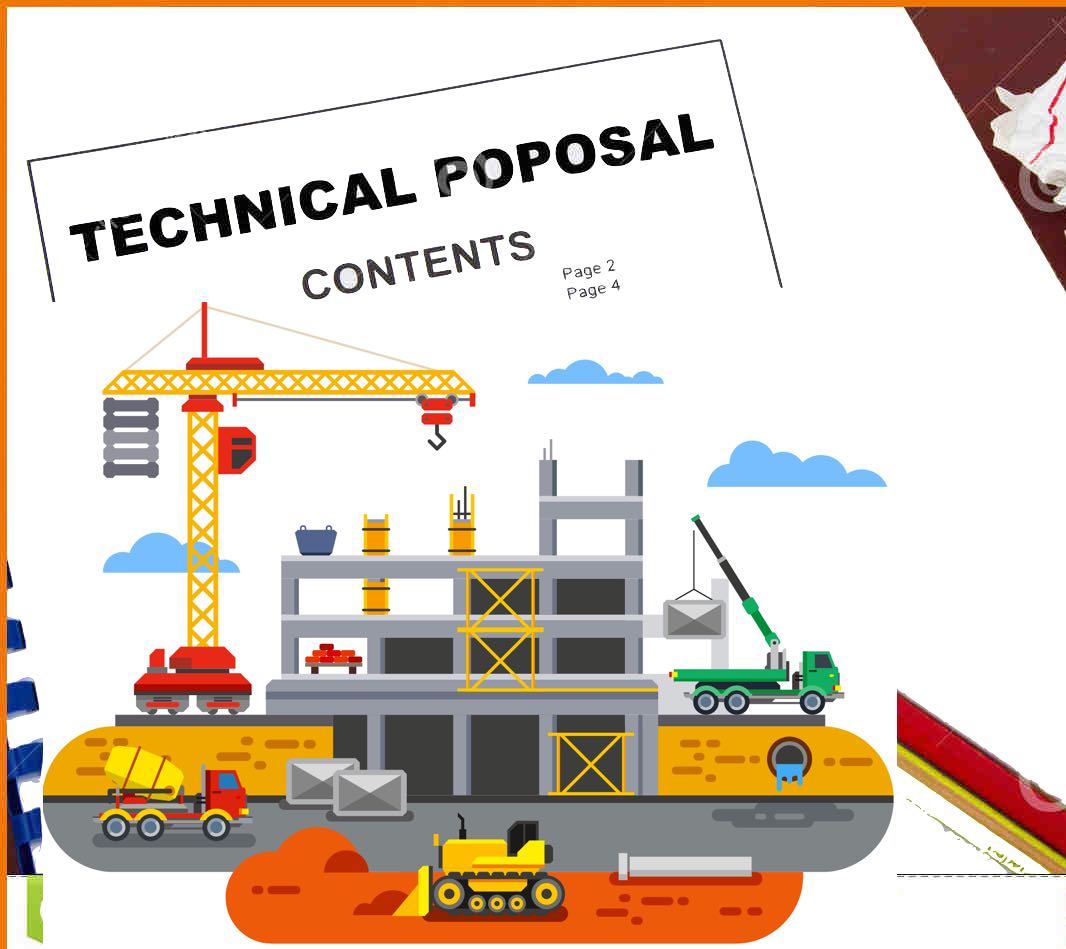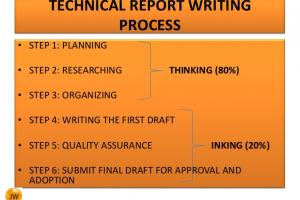How to Write Technical Construction Proposal

A document which persuades its readers to accept the writer's idea is called a proposal. The RFP asks for both a technical proposal and a cost proposal. There are two kinds of proposals.
- External Proposal
- Internal proposal
A. External Proposal:
In external proposal, one firm responds to a request from another firm on the government for a solution to a problem. It ranges from lengthy (100 pages or more) to a short (4-5 pages). A firm writes external proposals to win contracts for work. Government agencies and large and small corporations issue a request for proposal which explains the project and lists its specifications. Companies who receive the RFP writes proposals. A team assembles a document that shows that the company has the managerial expertise, technical know how and appropriate budget to develop the project. After receiving all the proposals, the firm that requested them turns them over to a team of evaluators, who after judging the technical management and cost sections, select the best proposal.
Planning the External proposal
To write an external proposal, you must consider your audience, research the situation, use visual aids, and follow the usual form of this type of document.
1. Consider the audience:
Usually your audience express problem to you in a written statement (an RFP) or in an interview. You must assess their technical awareness and write accordingly. To write to them effectively, one should
- address each need that they have expressed
- explain in clear terms how your proposal fills their needs
- Explain the relevance of technical data.
2. Research the situation:
To write the proposal effectively you must clearly understand your cutomer's needs by as well as your own service. You must research their needs by means of interviewing them or by reading their printed material.
3. Use visual aids:
Many types of visual aids e.g table, maps etc may be appropriate to your proposal. Your goal is to convince the decision makers that only your way is the best approach; good visuals are direct and dramatic, drawing your client into the document.
Writing the external proposal - Organizing
To write an external proposal, follow the usual form for writing the proposals. The four main parts of a proposal are:
a. Executive summary:
The executive summary contains information designed to convince executives that the proposers should receive the contract. It should present the content of technical, managerial and financial sections in clear terms. This section is often designed to make non technical people feel comfortable with the proposal.
b. Writing the technical section:
A proposal's technical section begins by stating the problem to be solved. The proposers must clearly demonstrate that they understand what the customer expects. The proposal should describe its approach towards solving the problem.
c. Writing the management section:
This section describes the personnel who will directly be related to the project. The proposal writer must explain what technical personnel and levels of management will be responsible for the success of the project. In a large external proposal, this section often contains organization charts and resumes. In short proposal, this section usually explains qualifications of personnel and firm's success with other similar projects.
d. Writing the financial section
The financial section provides a breakdown of the costs for every item in the proposal. Often this section is not just a table of costs. At times a brief introduction and the table may be all you need, but if you need to explain the significance of certain figures, then do so.
B. The Internal proposal
In an internal proposal, an employee on department urges someone else in the company to accept an idea or to fund equipment on research. There are two types of internal proposals:
- Assigned Proposal
- Uncolicited Proposal
1. Assigned proposal:
In assigned proposal an employee writes solution for a given problem. He does not have to establish the problem.
2. Unsolicited proposal:
In unsolicited proposal the writer writes the solution of a problem which he has discovered himself.
Planning the internal proposal
The goal of the proposal is to convince the person or group in authority to allow the writer to implement his idea. To achieve this goal, the writer must consider the audience, use visual aids, understand organizational principles and design a format.
I. Consider the audience
Writer considers the audience of a proposal in at least three ways; according to their involvement, their knowledge and their authority.
a. How involved is the audience
In most cases, readers either have assigned the proposal or they are unaware of the problem. In assigned proposal, the writer does not have to establish that the problem is a problem; but he or she does have to show how the proposal will solve the problem. If the proposal is not assigned then he first convinces the audience that the problem is a problem then he offers a convincing solution to the problem.
b. How knowledgeable is the audience.
The audience may or may not have the concepts and facts involved in the proposal. If the audience is less knowledgeable, take care to define terms, give background and use common examples.
c. How much authority does the audience have?
The audience may or may not be able to order implementation of your proposed solution. A manager might assign the writer to investigate some problem, but most likely the manager will have to take the proposal to a higher authority before it is approved.
II. Consider your own position
Your own position mirrors the audience position. If you have been assigned to write the proposal, you don’t have to establish that the problem is a problem, but you do have to show how your proposed solution matches the dimension of the problem. If you have discovered the problem then you have to establish that the problem is a problem and then explain your solution.
III. Use visual aids
Since the proposal probably will have multiple audiences, visual aids can enhance its impact. Visuals can support any part of the proposal - the problem, the solution, the implementation or even the benefits.
Writing / Organizing the internal proposal
The writer should organize the proposal around four questions.
What is the problem?
Describing the problem is a key part of proposals. You must establish three things about the problem.
- The data
- The significance
- The cause
Designing the proposal
To design a proposal, select an appropriate format, either formal or informal. A formal proposal will have a title page, table of contents and summary. The formats for an informal proposal can be a memo report on some kind of pre-printed form. The format depends on company policy and on the distance that the proposal must travel in the hierarchy-usually the shorter the distance, the more informal the format. Also, the less significant the proposal, the more informal the format is.
Use the introduction to orient the reader
The introduction must orient the reader to the writer the problem and the solution. Introductory sections often contain a separate summary paragraph that ______ the main prints of the body. If the body contains section on the solution, benefits, cost, implementation and the rejected alternatives, the summary should cover the same prints.
Use the discussion to convince your audience
The discussion section contains all the detailed information that you must present to convince the audience. A common approach functions this way:
The problem
- Explanation of the problem
- Causes of the problem
The solution
- Details of the solution
- Benefits of the solution
- Ways in which the solution satisfy criteria
The context
- Schedule for implementing the solution
- Personnel involved
- Solutions rejected









